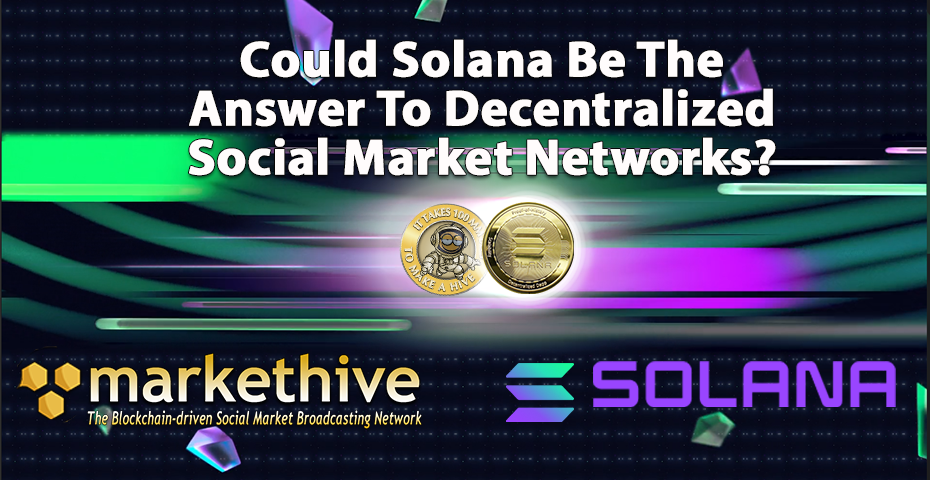


Image Source: Pixabay
What are wash trading and money laundering in NFTs?
Wash trading occurs when a trader or investor buys and sells the same securities multiple times in a short period to deceive other market participants about an asset's price or liquidity.
As mentioned, wash trading involves an act in which the same asset is sold and purchased within a short time. To influence an asset’s trading activity and price, traders use wash trading as a market manipulation technique. Typically, one or more colluding agents undertake a series of trades without considering market risks, resulting in no change in the antagonistic agents' original position.
In October 2021, Cryptopunks, a Larva Labs NFT project, witnessed something like a "wash sale" on the Ethereum blockchain. The cryptocurrency “CryptoPunk 9998” was sold for 124,457 Ether (ETH). The ETH used to purchase the NFT was transferred to the seller, then returned to the buyer to repay the loan used to buy the digital blockchain art from Larva Labs – effectively making it not only a flash loan but an example of significant NFT money laundering.
A trader or firm may be motivated to engage in wash trading for various reasons. For example, the purpose could be to stimulate purchasing to raise prices or encourage selling to drop prices. A trader may conduct a wash sale to lock in a capital loss before repurchasing the asset at a reduced cost basis, basically seeking a tax refund. Read More
The integration of CeFi and DeFi through Binance Bridge 2.0
Binance launches Binance Bridge 2.0 to connect Ethereum-based tokens (both listed and unlisted) as BTokens to the BNB Chain. You can use your wrapped BTokens to explore the metaverse, blockchain-based games, decentralized finance (Defi), and more in the BNB Chain ecosystem, reducing the need for swaps and overcoming other interoperability barriers that have plagued blockchain.
Therefore, Binance users will be able to use the bridge as a one-stop-shop for all centralized finance (Cefi) and DeFi. The intent behind the first version of the Binance Bridge was to make multiple blockchains more interoperable. In addition, it allowed anyone to exchange their crypto assets into Binance Chain (now BNB Chain) and Binance Smart Chain (now BNB Smart Chain) wrapped tokens (and vice versa).
The technique for swapping tokens (supported only on Binance.com) contains two categories in the first version: Peg-In and Peg-Out. Using Peg-In, users can swap native tokens for pegged tokens on the BNB Chain or BNB Smart Chain. Meanwhile, the Peg-Out technique allows users to convert pegged tokens to native tokens on the BNB Chain or the BNB Smart Chain.
Regular deposit and withdrawal functionalities in the Binance Bridge version 2.0 allow users to bridge tokens between their original blockchains and the BNB Chain. In the future, Binance also wants to improve its mobile app to enable users to perform similar conversions with a single click.
This article aims to discuss the integration of CeFi and DeFi through Binance Bridge 2.0 and how the Binance Bridge works. Read More
What’s Fueling the Rise of NFT Photography Collecting
Photography became part of the fine art world only about a century ago. Now, NFT photography is making inroads with younger collectors.
Avid NFT photography collector Freddie snatched a photograph for $2,300 in November. Two months later, he flipped it for $30,400.
Welcome to the world of NFT photography collecting, where fine art meets decentralized finance for Millennials. Data from Artprice and estimates from Collector Daily suggest that the NFT photography market grew in 2021 to $200 million, the size of the traditional fine art print photography market.
This is just the tip of the iceberg. The art world is undergoing a massive transformation because of a rare confluence of major cultural and technological changes.
Fine art photography is at the center of this confluence of technological immersion, wealth transfer, and crypto wealth generation, as the NFT photography market not only transforms but grows significantly.
Freddie, who like many in NFT-land prefers a handle to a full name, is more bullish on NFTs than physical photos: “I believe society will gradually become more digitized, and as that happens we will place more and more value in our digital lives. As the digital native generations start to have the funds our parents had, and we spend more time in front of screens, we will use our disposable incomes to collect—to support the arts, preserve wealth, and impress our friends online.” Read More
The world doesn’t need banks, policymakers, or NGOs — It needs DeFi
DeFi can usher in a system where people don’t have to pay international corporations 10% to send money home in the internet era of Web3.
The world needs DeFi due to corruption. Big governments and international corporations are controlled not in the interest of the people, but the interest of their bottom line. Credit cards and personal loans have tremendous fees, as do remittances.
When migrants send home part of their earnings in the form of remittances, they represent a large source of foreign income for many developing economies. Remittances, which are particularly important for low-income countries, account for nearly 4%t of their GDP, compared with approximately 1.5% of the GDP for middle-income countries. Remittance flows are important because they are more stable than capital flows, and they tend to be countercyclical, meaning remittances increase during economic downturns or after a natural disaster when private capital flows fall.
DeFi lowers the fees migrant workers pay to send money home, saving them billions of dollars. Some remittances entail fees of more than 20%. Out of desperation, people pay these fees to send a considerable source of their income to households across Africa, Asia, and Latin America, helping to lift families out of poverty by providing financial stability. Read More

Because of Solana’s POH method, it can horizontally scale the rest of the blockchain, the same way that operating systems and databases scale their software. Each Solana team member has over a decade of experience working in operating systems GPU acceleration. Compilers, networks, etc., giving them extensive and deep experience optimizing software.
Solana is based on scaling software with hardware, with the vision of building the world's largest decentralized, single chart blockchain. The only way to do that is by scaling all the core technologies with hardware.
Scaling the Blockchain in this way delivers a cheap cryptographic base for financial transfers and, more importantly, outside of finance. It is a way for Solana to build a better web experience for social media communities regarding micropayments.
Also, advertising-based revenues can be relinquished for social networks, leading communities to generate value by self-expression, creating their own content, and growing the network and the connections within the community, creating a better world for all. Read More
‘Surprising’ Development in XRP Lawsuit As SEC Decides To End Discovery Phase With Ripple: Crypto Legal Expert
A popular attorney who tracks and analyzes the U.S. Securities and Exchange Commission’s (SEC) lawsuit with Ripple says that the top regulator has made an unexpected decision in their suit.
The SEC sued Ripple in late 2020 under allegations that the payments firm sold XRP as an unregistered security.
Attorney Jeremy Hogan says that he couldn’t be more surprised by the SEC’s decision to end its discovery process, which is the point in a lawsuit where both parties exchange information otherwise not known or readily available.
“Almost NOTHING would have surprised me more than this.
And yes, this is a very good thing. The only remaining areas of delay are the appeal regarding the Hinman emails and in general, just scheduling.
SEC discovery is complete, and that’s a big step forward.” Read More
How Web3 is redefining storytelling for creators and fans through NFTs
Web3 has given rise to generative NFTs that allow both fans and creators to tell stories across different mediums.
The rise of Web3 has given creators additional opportunities to make nonfungible tokens that have utility in virtual ecosystems. This has also allowed NFTs to extend beyond just aesthetically pleasing images, giving rise to community building through new forms of storytelling within different mediums.
To put this in perspective, Yat Siu, co-founder, and chairman of Animoca Brands — a Hong Kong-based gaming and venture capital company — told Cointelegraph that collaborative narrative forms, like fan fiction and YouTube videos, became quite popular with the development of Web2. “But, what was missing was an efficient way to share collaborative efforts for recognition and economic benefit in a scalable and equitable manner. Web3 can help to change that,” Siu said.
Siu believes that Web3 has made it possible for content creators such as writers, artists, film directors, and others to collaborate with individuals on various creative efforts. Siu shared that this is partly due to the fact that Web3 content contributions to be tracked on-chain: Read More
Terra's Stablecoin UST Becomes Crypto's Third-Largest
The dollar-pegged UST has overtaken Binance USD to become the crypto market’s third-largest stablecoin by market capitalization.
First DAI, now BUSD. Terra’s UST is on a tear.
Today, the fast-growing TerraUSD (UST) stablecoin from the Terra ecosystem has hit another key milestone. With more than $17 billion in market capitalization, it's become crypto’s third-largest stablecoin.
Terra's stablecoin overtook Binance USD (BUSD) to grab third place, but the gap is thin: roughly $68 million.
The leading stablecoin as of this writing is Tether (USDT), which commands a whopping $82 billion market cap. USD Coin (USDC) is second at $49 billion.
Besides the difference in market caps, there’s also a fundamental difference in how these stablecoins are designed. Read More
Cameroon, DRC, and Republic of Congo Exploring The Open Network’s (TON) Blockchain Solution
Cameroon, DRC, and Republic of Congo are claimed to be exploring incorporating bitcoin and blockchain technology provided by The Open Network (TON) in their respective national systems. It’s also possible that Cameroon may develop a sovereign stablecoin over the same blockchain platform.
DRC is contemplating introducing a sovereign stablecoin based on the blockchain, as per a press release from The Open Network (TON). Congo’s Minister of Posts, Telecommunications, and the Digital Economy, Léon Juste Ibombo, remarked on the possibility of his country’s collaboration with TON:
“For the past few years, the Republic of Congo has been encouraging and seeing significant use of mobile payments throughout the nation. In order to go forward, we feel that TON is the number one choice for us. For both the state and the citizens, this will be an effective and practical tool for development and wealth generation.” Read More
Disclaimer: These articles are provided for informational purposes only. They are not offered or intended to be used as legal, tax, investment, financial, or any other advice.